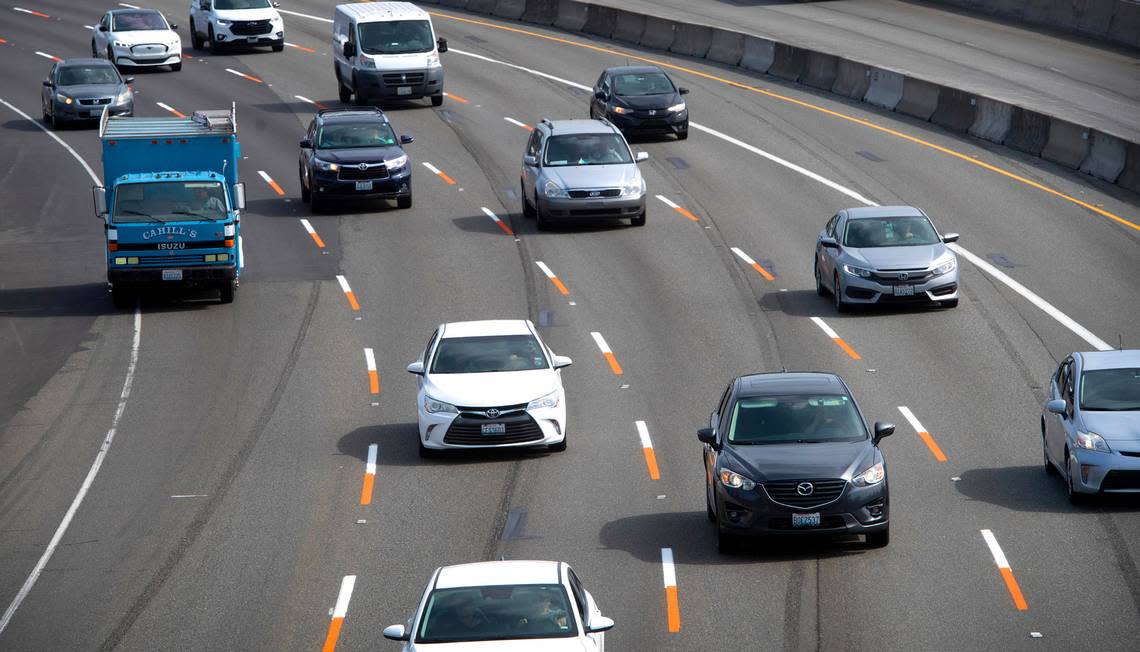Rules of the Road: Interested in the history of road striping? No crying over spilled milk

Q: Has road striping paint changed? When I’m driving at night and in the rain it’s tough to see the lines. It doesn’t seem as reflective as it used to be.
A: You’re probably not looking for a history lesson on road paint, but it’s a cute story so I’m going to tell it. In 1911 Edward Hines was following a milk truck down the road as the truck leaked milk from its cargo hold. The stripe of white milk in the middle of the road inspired Hines, a member of the Wayne County Road Commission in Michigan, to paint centerlines in Wayne County to separate two-way traffic. The folks in Michigan call it the most important traffic safety device in the history of auto transportation. The rest of us think the seat belt claims that title, but it’s still a great idea.
Road paint was initially just paint. The eventual addition of tiny glass beads made the lines retroreflective, increasing nighttime visibility. This is where things get science-nerdy. I’m going to gloss over that (reflective paint pun) and just note that retroreflective objects reflect light back in the same direction it came from.
For a long time road paint was solvent-based, but the solvent was bad for both the environment and the people who applied it. A road crew leader I spoke with described it as, “nasty to work with.” Today road striping is most commonly water-based paint or thermoplastic. I’m no expert in this, so I talked with a couple of people, from city and county public works offices, who know their stripes.
There are a lot of differences between paint and plastic, but the two most relevant to this discussion are cost and durability. Thermoplastic is expensive, but it lasts three to five years, and possibly longer. Paint is cheaper, but it may only last a year or two. And the retroreflective beads can wear away faster than the paint itself, sometimes lasting only months.
I’m going to generalize here: cities are more likely to use thermoplastic markings, while counties tend to use paint. It comes down to the budget. Counties usually have more lane miles to paint, so the cost of thermoplastic markings is out of reach.
One of the biggest challenges for striping paint manufacturers is ensuring visibility in wet and dark conditions. That describes driving in Washington half of the year. Public works departments prioritize the frequency of road striping based on traffic volume, with top-priority roads getting painted every year. But if the glass beads on a busy road wear out in less than a year, there’s not much they can do about it. To properly apply road paint you need dry weather and temperatures above 50 degrees. Those wet and dark days when you most need bright stripes are also the days when it’s not possible to apply them.
If you could invent a product that’s cheaper than paint, more durable than thermoplastic, and brighter than both, you’d make driving safer for all of us and insure your financial future. Meanwhile, we need to admit that driving conditions are often less than ideal. We tend to think of the speed limit as the black number on the white sign. That’s the absolute maximum, but the real speed limit is the speed that is “reasonable and prudent under the conditions and having regard to the actual and potential hazards then existing.”
To misquote Donald Rumsfeld, you drive on the road you have, not the road you might want or wish to have. And that includes adjusting our driving to the conditions we’re dealt.

